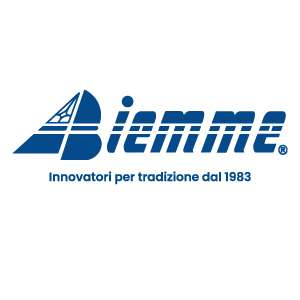Comportamento sismico di un telaio controventato in acciaio dotato di protezioni passive al fuoco
Il confronto tra elementi strutturali in acciaio senza protezione antincendio e con tre soluzioni di protezione attraverso l'uso di prove sperimentali.
Comportamento sismico di un telaio controventato in acciaio dotato di protezioni passive al fuoco
L’articolo descrive i risultati sperimentali di un telaio in acciaio controventato dotato di protezioni antincendio passive soggette all'azione sismica nell'ambito del progetto europeo EQUIFIRE.
La struttura è stata progettata per un picco di accelerazione del suolo di riferimento pari a 0,186 g, tipologia di terreno B e spettro di risposta elastico di tipo 1 secondo l'Eurocodice 8. Sono state eseguite prove sperimentali sul telaio, equipaggiato con differenti configurazioni di protezione antincendio, presso il muro di reazione del laboratorio ELSA del Joint Research Centre (JRC).
Sono stati infatti presi in considerazione elementi strutturali senza protezione antincendio e elementi strutturali con tre soluzioni di protezione antincendio, quali protezioni scatolari con lastre convenzionali e antisismiche oltre a spray di vermiculite. Le prove sperimentali sono state eseguite mediante la tecnica pseudodinamica su un telaio in scala reale corrispondente al primo piano dell'edificio, mentre i tre piani superiori sono stati simulati numericamente. Nell’articolo vengono riportati i danni delle protezioni antincendio applicati sui controventi e su una colonna a seguito di uno
scenario di incendio post sisma.
Leggi di seguito il testo originale della memoria CTA.
Abstract
The paper describes the experimental behaviour of a braced steel frame equipped with passive fire protections subjected to the seismic action as a part of the European EQUFIRE project. The structure was designed for reference peak ground acceleration equal to 0.186g, soil type B and type 1 elastic response spectrum according to Eurocode 8. Experimental tests were performed at the ELSA Reaction Wall of the Joint Research Centre (JRC) according to different configurations.
In fact, bare elements without fire protection and specimens with three fire protection solutions, i.e. conventional and seismic-resistant boards as well as vermiculite spray, were considered. The experimental tests were performed by means of the pseudodynamic technique on a full-scale specimen physically representing the first storey of the building, while the upper three storeys were numerically simulated. The damage of passive fire protections applied on the bracing and one column are reported in order to give insight into a fire following earthquake scenario.
Introduction
Earthquakes are destructive and unpredictable events with catastrophic consequences for both people and built environment. Moreover, secondary triggered effects can strike further an already weakened community, i.e. ground shaking, surface faults, landslides and tsunamis.
In this respect, also fires following earthquake (FFE) have historically produced large post-earthquake damage and losses in terms of lives, buildings and economic costs, like the San Francisco earthquake (1906), the Kobe earthquake (1995), the Turkey earthquake (2011), the Tohoku earthquake (2011) and the Christ-church earthquakes (2011).
In detail, FFE are a considerable threat as they can be wide-spread both at the building level and at the regional level within the seismic affected area owing to the rupture of gas lines, failure of electrical systems etc. and at the same time failure of the compartmentation measures. Moreover, they are more difficult to tackle by the fire brigades because of their possible large number and extent as well as of possible disruptions within the infrastructural net-work that hinder their timely intervention and within the water supply system.
In this context, the development of a resilience plan is recommended to increase understanding of the impacts and the serious consequences of disruptions and failures in order to mitigate hazards, contain the effects of disasters and improve the strategic response to earthquakes/fires when they occur.
In a fire following earthquake scenario, the structural fire performance can worsen significantly because the fire acts on an already damaged structure.
Furthermore, passive and active fire protections may have also been damaged by the seismic action and the fire can spread more rapidly if compartmentation measures have failed. Thus, the seismic performance of the non structural components may directly affect the fire performance of the structural members. As consequence, the minimization of the non-structural damage is paramount in mitigating the possible drop in structural fire performance.
The loss of fire protection is particularly dangerous for steel structures because the high thermal conductivity associated with small profile thicknesses entails quick temperature rise in the profiles with consequent fast loss of strength and stiffness.
Most of the literature involve numerical simulations on steel moment resisting frames and only a few of them are dedicated to buckling-restrained and conventional brace systems. Both developed a framework for evaluating the post-earthquake performance of steel structures in a multi-hazard context that in-corporates tools that are capable of probabilistic structural analyses under fire and seismic loads. Experimental studies have been performed on single elements, full-scale reinforced concrete frames and full-scale hybrid FFE tests on steel braced frame (EQUFIRE project).
The EQUFIRE project focuses on the analysis of the behaviour of a braced steel structure subjected XXVIII CONGRESSO C.T.A. 1033 to FFE through full-scale tests based on hybrid simulation at the ELSA Reaction Wall at Joint Research Centre (JRC) and through tests on single elements at the furnace of the Federal Institute for Materials Research and Testing (BAM).
CONTINUA LA LETTURA NEL PDF.
L'articolo è tratto dalle memorie del XXVIII CONGRESSO C.T.A. che si è svolto a Francavilla al Mare (Chieti) dal 29 settembre al 1 ottobre 2022.

Antincendio
Area di Ingenio dedicata tema della sicurezza al fuoco: normativa vigente, sistemi e tecnologie avanzate per la prevenzione e il controllo degli incendi
Costruzioni Metalliche
Le costruzioni metalliche rappresentano una scelta strategica per strutture leggere, sicure, resistenti e sostenibili. Scopri su INGENIO tecniche, norme e soluzioni per progettare con l’acciaio.

Ingegneria Strutturale
Tutto quello che riguarda il tema dell’ingegneria strutturale: innovazione digitale, modellazione e progettazione, tecniche di costruzione e di intervento, controlli e monitoraggi, soluzioni per il miglioramento, evoluzione normativa, approfondimento di casi concreti e pareri degli esperti.
Normativa Tecnica
Con questo TOPIC raccogliamo le news e gli approfondimenti che riguardano il tema della normativa tecnica: le nuove disposizioni, le sentenze, i pareri e commenti, l’analisi di casi concreti, il commento degli esperti.
Sicurezza
Gli approfondimenti e le news riguardanti il tema della sicurezza intesa sia come strutturale, antincendio, sul lavoro, ambientale, informatica, ecc.

Sismica
Tutti gli articoli pubblicati da Ingenio nell’ambito della sismologia e dell’ingegneria sismica.
Condividi su: Facebook LinkedIn Twitter WhatsApp
